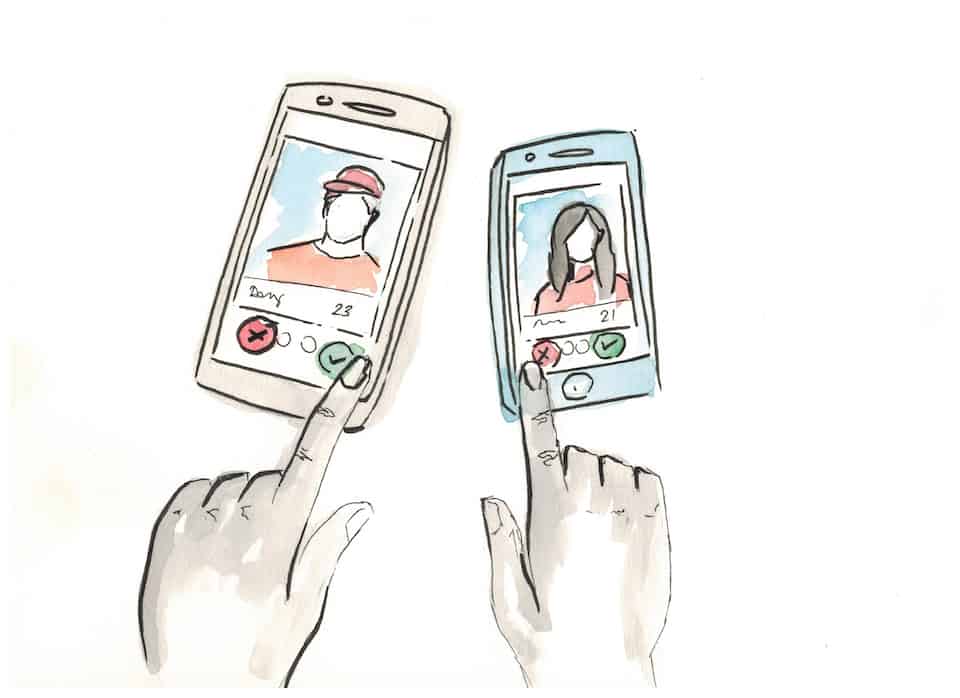[dropcap]A[/dropcap]t Christmas dinner with my extended family, the classic uncomfortable investigation came from the elders: how are the boys? Cue a snarky jab from my younger brother about everyone’s favourite swiping app, and I ended up in the unfortunate position of having to explain the concept of Tinder to my grandmother.
How would you explain and defend Tinder to someone who was born the same year the British left India? On the surface, the app apparently marks the decline of romance, given its infamous reputation for facilitating one-night stands. This, in turn, leads to a stigmatization of its ability to actually foster long-lasting relationships.
In fact, many of my peers seem inclined to create fake ‘how we met stories’ after finding and dating someone on Tinder, in order to sidestep this stigma. A good friend of mine has been dating her boyfriend for around three months. While we referred to him as ‘Tinder boy’ when they were unofficially hanging out, she slowly transitioned to referring to him as ‘Starbucks boy’ when she realized he was sticking around. The Starbucks ‘how we met’ story was initially created solely for ‘meeting the family’ purposes. Yet, she began to rely on it more and more when everyone seemed to delegitimize the origins of the romance.
It is strange that we ridicule Tinder as a means of romantic interaction, especially given that it is so popular among our generation. While no one can pinpoint the exact moment we went from flower petals and ‘he loves me, he loves me not’ to ‘swipe right, swipe left,’ it’s clear that online courtships has taken the world by storm.
A 2011 Leger Marketing study showed that 36 per cent of Canadians between the ages of 18 and 34 used dating apps. Over 50 per cent of Tinder’s user base are between the ages of 18 and 24, which coincides with the peak ages for university attendance.
Certainly, there are those who have not succeeded in, or simply avoided, the Tinder-verse. This is presumably because many of us haven’t yet unpacked the social stigma of meeting a significant other on an app that was initially marketed as a hook-up tool, even though Millenials are comfortable with using Tinder as a pastime.
Perhaps Tinder isn’t as romantic as bumping into someone in the hall of Sidney Smith, stooping to pick up the books you dropped, and gazing into one another’s eyes for the first time. Yet, as much as we may long for those moments, real life is not a romantic comedy.
Whether you’re introduced by friends or meet in an elevator, there’s an inordinate amount of luck involved in meeting someone right for you. Millenials are busy, and we don’t always have time to wait around for cupid. It’s a good thing that we make our own luck, and Tinder — amongst other dating apps — is incredibly helpful in facilitating that. Such technology merely represents a different, form, rather than a deterioration, of communication.
At least for the next little while, Tinder is here to stay, and its customer base grows every day. So, while my own parents met at a high school party in Whitby, “how we met stories” may be markedly different in 10 years. Perhaps that’s not such a bad thing.
Nish Chankar is a second-year student at Trinity College studying economics and international relations. She is also the associate vice-president, equity of the University of Toronto Students’ Union (UTSU); the views expressed here are her own.


